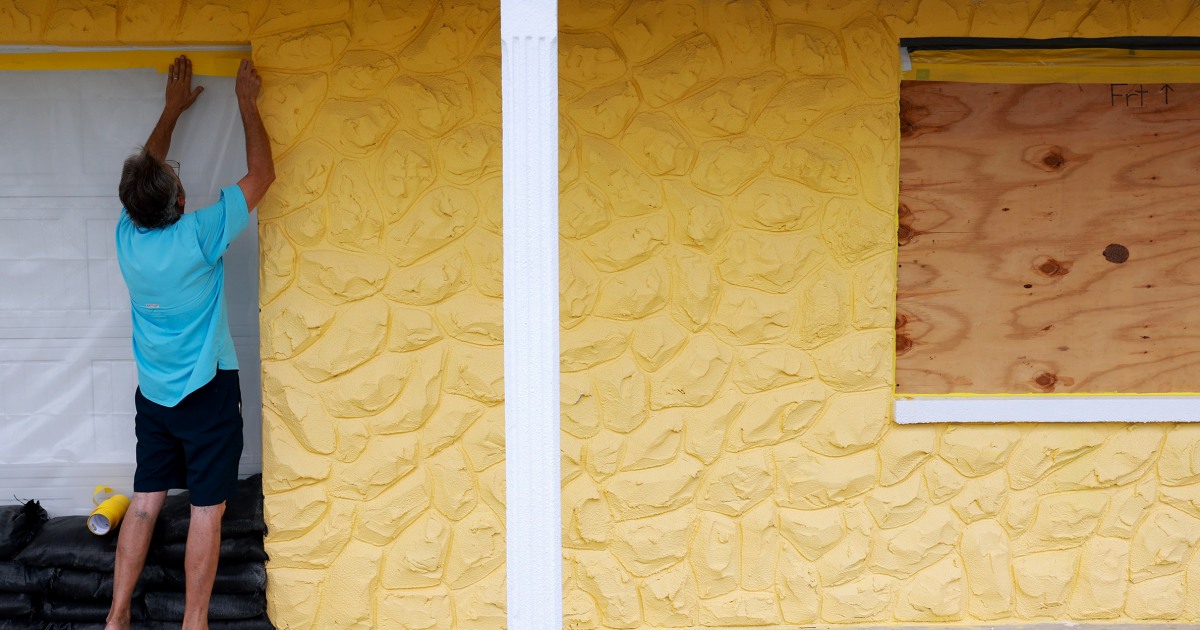Florida resident Michelle Curtis spent much of Wednesday securing her beach house and preparing to transport her horses and dogs from her farm in Perry to a friend’s property several counties away.
Hurricane Helene will be the third major storm to hit her region in 13 months, and Curtis and her husband are becoming experts at “battening down the hatches,” she joked from a gas station 12 miles north of Perry, in Taylor County.
“We can only do what we can to prepare, and then we just have to leave it up to the Lord,” she said in a phone interview.
Follow along for live coverage
Helene was forecast Wednesday evening to become a Category 4 hurricane before it makes landfall in Florida’s Big Bend area Thursday night.
It could bring winds in excess of 130 mph, life-threatening storm surge and flooding.
Some residents say they were still rebuilding from previous storms when new evacuation orders were issued this week.
“Idalia hit us hard,” Curtis said of last year’s hurricane, which caused significant damage across large swaths of the Southeastern U.S.
Many of her neighbors still have blue tarps on their roofs to cover the damage sustained during that storm and now face a new threat.
“We all just have to stick together,” she said.
Adding to the chaos created by natural disasters are the cleanup and the bureaucracy that follow. For people without insurance, it can feel like a never-ending cycle of bills and debt.
Curtis, who is semi-retired, said she and her husband are among the lucky residents who are able to afford insurance on the two properties they own.
She estimates they pay upward of $10,000 a year on insurance alone.
Florida ranks sixth among states with the largest shares of homeowners who don’t have meaningful insurance. About 18% of homeowners across the state — about 1 in 6 — are without it.
On a county-by-county basis, many of Florida’s most-populous places skew even higher. Putnam County, in the northern part of the state, is at 32.9%, while in Miami-Dade County, nearly 25% lack homeowners insurance that would protect them from calamity.
The National Oceanic and Atmospheric Administration rated Miami-Dade as one of the 10 riskiest counties to live in in the U.S.
At the same time, nearly 20% of Florida homeowners pay $4,000 or more a year for homeowners insurance — the largest share in the country, according to the Census Bureau.
In Miami-Dade County, 33.5% of homeowners pay $4,000-plus a year, ranking it in the top 10 among the country’s most populous counties.
Curtis, who has lived in Taylor County for 40 years and is a former forester, said many of her neighbors can’t afford to pay for insurance.
Even with the premium she and her husband, who still works as a forester, pay, the couple were still cleaning up from previous hurricanes when they had to race to evacuate this week.
“Our land is a mess from the first storm,” she said.
Debbie McDonald, who owns and operates the Cedar Inn Motel in Cedar Key, a coastal community southwest of Gainesville, said she is more “scared this time” after she heard about the potential for surges that could reach up to 20 feet.
Last year when Hurricane Idalia hit, 2 feet of water filled the parking lot but was held at bay by insulating foam fill. This year, she’s worried it won’t be enough.
“If it gets up to my windows, it’s going to go in my rooms no matter what,” she said, speaking from her daughter’s home near Jacksonville.
She intends to wait out the storm there while a motel employee and four Cedar Key residents watch the property from the safety of the top floors.
McDonald’s motel, which has been on the island since the 1970s, sits about a block from the beach. The lower floors are at sea level, but the top sit about 9 feet from the ocean.
Her insurance doesn’t cover hurricane damage, so McDonald will anxiously await news from home until the storm passes, she said.
“This little island really pulls together when things like this happen,” she said.

